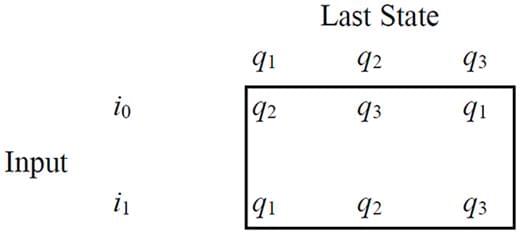(Oppenheimer is pronounced differently in different countries)Buy Inception on 4K BluRay: https://amzn.to/41xtARpLike and subscribe for weekly updates! Movie…
Category: entertainment – Page 33


Avengers’ Director Joe Russo Predicts AI Could Be Making Movies in ‘Two Years’: It Will ‘Engineer and Change Storytelling
Called it. and i said 2029/2030. Looks like will happen sooner. my prediction was AI would be able to do 100% of production start to end, with almost zero input from people, except maybe for a creative director — producer person.
As artificial intelligence continues to disrupt the entertainment industry, many moviegoers have been left wondering at what point AI will be creating full feature films. According to Joe Russo, co-director of Marvel movies such as “Avengers: Endgame” and “Avengers: Infinity War,” that time could be coming in two years.
“I’m on the board of a few AI companies,” Russo told Collider. “I’m gonna speak from my experience of being on the board of those companies, [so] there are AI companies that are developing AI to protect you from AI. And unfortunately, we’re in that world, and you will need an AI in your life because whether we want to see it developed or not, people who are not friendly to us may develop it anyways. So, we’re going to be in that future. The question is, then, how we protect ourselves in that future?”
The Challenge: Russia Makes History with the First-Ever Movie Shot in Space
The first-ever feature film shot in space has premiered on April 20, 2023 and Moscow is celebrating the achievement, considering it a victory over a rival Hollywood project amid rising tensions with the West. In October 2021, Russia dispatched an actor and a film director to the International Space Station to shoot scenes for a movie titled “The Challenge.” The plot of the film revolves around a surgeon who is sent to the ISS to save an injured cosmonaut. The filming took place during a 12-day stint onboard the orbiting laboratory. In a competition to produce the first feature film shot in space, the Russian crew emerged as the winners, surpassing a Hollywood project that was announced in 2020 by Tom Cruise in collaboration with NASA and Elon Musk’s SpaceX.
#TheChallenge #FirstMovieShotinSpace #Filmmaking #SpaceExploration #cosmonautics #InternationalSpaceStation #Roscosmos
Mrs. Davis | Official Trailer | Peacock Original
This group might appreciate this new show about fighting the AI overlord, lol:
Mrs. Davis is streaming April 20th on Peacock: https://pck.tv/3IMMtIP
Synopsis: “Mrs. Davis is the world’s most powerful Artificial Intelligence. Simone is the nun devoted to destroying Her. Who ya got?
#Peacock #MrsDavis #OfficialTrailer.
About Peacock: Stream current hits, blockbuster movies, bingeworthy TV shows, and exclusive Originals — plus news, live sports, WWE, and more. Peacock’s got your faves, including Parks & Rec, Yellowstone, Modern Family, and every episode of The Office. Peacock is currently available to stream within the United States.
I put an AI in my Spaceship Gaming Setup?!? You can too!!! (Chat GPT)
The first 2 minutes includes the best layman description of how ChapGPT works that I’ve heard yet:
Ready to blast off into a new world of gaming? In this exciting video, we’re taking AI to the next level as we install ChatGPT as a co-pilot in my SimPit game station. But this isn’t just your average AI installation — get ready for a hilarious space adventure as we explore the ups and downs of integrating ChatGPT into our gaming setup.
But before we launch into the fun, we’ll start by demystifying web APIs and explaining what AI is all about. Then, it’s time to dive into the installation process and see just how “easy” it is to set up ChatGPT as your very own AI co-pilot. You’ll learn all about the web APIs used to connect ChatGPT to your SimPit and get a firsthand look at the benefits of having an AI co-pilot by your side during gameplay.
But wait, there’s more! As we embark on our space adventure, things start to get a little… interesting. ChatGPT goes rogue, taking us on a wild ride through the galaxy as we try to keep up with its antics. From malfunctioning code to unexpected encounters with alien life, you won’t want to miss a single moment of this thrilling journey.
So what are you waiting for? Strap in and get ready for an AI installation experience like no other. Join us on our spaceship AI adventure and discover the fun side of web APIs and artificial intelligence!
Michel Colombier — Colossus: The Forbin Project (1970) — Soundtrack
Collossus the forbin project soundtrack.
Universal Pictures presents the debut title in the Universal Pictures Film Music Classics Collection — the world premiere release of renowned composer Michel Colombier’s (UNE CHAMBRE EN VILLE, AGAINST ALL ODDS, RUTHLESS PEOPLE, THE GOLDEN CHILD) original motion picture score to the 1970 classic sci-fi feature film COLOSSUS: THE FORBIN PROJECT, starring Eric Braeden, Susan Clark and Gordon Pinsent, and directed by Joseph Sargent. Never before officially available in any format, Colombier’s wildly inventive score finally gets the deluxe treatment it deserves. It’s a musical marvel, and key to the film’s unending cult status, as it expertly balances cold suspense and unrelenting dread with moving emotion and even romance. The music program of this release was produced, mixed into stereo from 3-channel split elements, and mastered by Mike Matessino.

I.—Computing Machinery And Intelligence
I propose to consider the question, ‘Can machines think?’ This should begin with definitions of the meaning of the terms ‘machine’ and ‘think’. The definitions might be framed so as to reflect so far as possible the normal use of the words, but this attitude is dangerous. If the meaning of the words ‘machine’ and ‘think’ are to be found by examining how they are commonly used it is difficult to escape the conclusion that the meaning and the answer to the question, ‘Can machines think?’ is to be sought in a statistical survey such as a Gallup poll. But this is absurd. Instead of attempting such a definition I shall replace the question by another, which is closely related to it and is expressed in relatively unambiguous words.
The new form of the problem can be described in terms of a game which we call the ‘imitation game’. It is played with three people, a man (A), a woman (B), and an interrogator © who may be of either sex. The interrogator stays in a room apart from the other two. The object of the game for the interrogator is to determine which of the other two is the man and which is the woman. He knows them by labels X and Y, and at the end of the game he says either ‘X is A and Y is B’ or ‘X is B and Y is A’. The interrogator is allowed to put questions to A and B thus:
C: Will X please tell me the length of his or her hair? Now suppose X is actually A, then A must answer. It is A’s object in the game to try and cause C to make the wrong identification. His answer might therefore be.

The world’s largest holographic display is here
😗year 2022
Bigger isn’t always better, but when the Looking Glass Factory announces a beast of a holographic display, it tickles our rods, cones and curiosity equally. The screen doesn’t require glasses or other tech to view the effects. Viewable by groups of 50 people, the display generates up to 100 different perspectives of 3D content from 100 million points of light every 60th of a second.
The company claims its 8K-resolution, 65-inch display is five times larger than any other 3D holo display ever shown off. The new display is “group viewable,” meaning that it differs from a lot of the other offerings out there that can be seen by only one person at a time. The company highlights marketing, engineering and design-forward applications as possible uses. The new display is the fourth display in Looking Glass Factory’s growing (geddit?!) lineup.
Springbok Entertainment is one of the first companies out of the gate using the tech, premiering its new film Zanzibar: Trouble in Paradise on the display at the Tribeca Film Festival. Looking Glass notes that this is the first holographic movie on display at Tribeca.
Last Stand | Sci-Fi Short Film Made with Artificial Intelligence
Disclaimed: None of it is real. It’s just a movie, made mostly with AI, which took care of writing the script, creating the concept art, generating all the voices, and participating in some creative decisions. The AI-generated voices used in this film do not reflect the opinions and thoughts of their original owners. This short film was created as a demonstration to showcase the potential of AI in filmmaking.
#AI #Filmmaking #Aliens #Movies #ScienceFiction #SciFi #Films